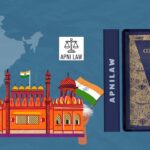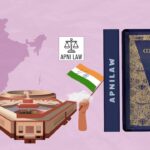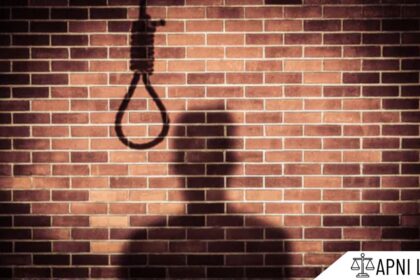Introduction
Article 356 of the Indian Constitution empowers the President of India to impose President’s Rule in a state when the constitutional machinery breaks down. This article allows the Union government to take direct control of a state’s administration to ensure the smooth functioning of governance during political or constitutional crises. Over time, this provision has sparked major debates in Indian politics because it directly tests the balance between state autonomy and central authority.
President’s Rule is not merely an administrative measure; it is a constitutional mechanism that steps in when democratic governance in a state becomes impossible. However, the frequent and sometimes politically motivated use of this article has led to its criticism and judicial scrutiny.
Text of Article 356
Article 356(1) of the Indian Constitution states that if the President, on receiving a report from the Governor or otherwise, is satisfied that the government of a state cannot be carried on in accordance with the Constitution, the President may by proclamation assume to himself all or any of the functions of the Government of the State, and all or any of the powers vested in or exercisable by the Governor or any other authority in the state, except the Legislature. The President may also declare that the powers of the Legislature of the state shall be exercised by or under the authority of Parliament and make any incidental or consequential provisions as necessary.
This means that when a state fails to function constitutionally, the President can take over its administration, dissolve or suspend its legislature, and transfer its legislative powers to Parliament.
Purpose of Article 356
The main purpose of Article 356 is to ensure the preservation of constitutional governance. It serves as a corrective mechanism that allows the Union government to act when a state government collapses or violates constitutional norms. Dr. B.R. Ambedkar described this provision as one that should remain a “dead letter,” to be used only in exceptional circumstances. The intention behind the article was not to give the Centre an upper hand over the states but to maintain the constitutional framework when a state fails to do so.
Conditions for Imposing President’s Rule
President’s Rule can be proclaimed when the Governor reports to the President that the state government cannot function according to the Constitution. This usually happens when no party secures a majority after elections, when a ruling party loses its majority and fails to prove it on the floor of the house, or when law and order completely break down. In some cases, the President may also act without a formal report from the Governor if credible information indicates a constitutional crisis.
Procedure for Imposition
The process of imposing President’s Rule begins with the Governor’s report to the President. After reviewing the report, the President issues a proclamation under Article 356. The proclamation must then receive approval from both Houses of Parliament within two months. Once approved, President’s Rule continues for six months and can be extended up to three years, with Parliament’s approval every six months. The President may revoke the proclamation at any time before its expiry if the situation in the state improves.
During this period, the state’s administration runs under the Governor’s supervision, acting on behalf of the President. The Council of Ministers is dismissed, and Parliament assumes the legislative powers of the state.
Effects of President’s Rule
Once President’s Rule is imposed, the Governor becomes the key executive authority in the state, working directly under the President’s control. The legislative assembly may either be dissolved or kept in suspended animation. Parliament makes laws for the state, and the executive authority functions under the Union’s guidance. Effectively, the state loses its autonomy for the duration of President’s Rule, and all major administrative decisions are taken by the central government.
Judicial Review of Article 356
Initially, the President’s satisfaction in proclaiming President’s Rule was considered beyond judicial review. However, this changed after the historic Supreme Court judgment in S.R. Bommai v. Union of India (1994). In this case, the Court held that the President’s satisfaction is not absolute and can be challenged in court if found mala fide or based on irrelevant grounds.
The Court also ruled that the majority of a government must be tested on the floor of the house and not determined by the Governor’s subjective assessment. If a government enjoys majority support, the President cannot dismiss it arbitrarily. The Bommai case thus introduced strong safeguards against the misuse of Article 356 and reinforced the principles of federalism and democratic accountability.
Use and Misuse in Indian History
Since the Constitution came into force, Article 356 has been invoked over 120 times. While some instances were justified, many were politically motivated. The first instance occurred in 1959 when the Communist government of Kerala, led by E.M.S. Namboodiripad, was dismissed. This set a precedent for future political use.
In 1977, after the Emergency, the Janata Party government dismissed nine Congress-ruled state governments. Similarly, in 1980, when Indira Gandhi returned to power, she dismissed nine Janata Party governments on grounds of instability. Again in 1992, after the demolition of the Babri Masjid, the Centre dismissed four BJP-ruled state governments citing law and order failure.
These examples show that Article 356 has often been used as a political tool rather than a constitutional remedy. However, after the S.R. Bommai judgment, such arbitrary dismissals have become rare.
Safeguards Against Misuse
The S.R. Bommai ruling established vital checks to prevent political misuse. The President’s decision can now be examined by the judiciary, ensuring that it is based on valid constitutional reasons. The Governor must justify his report objectively, and any decision to dismiss a government must rely on the outcome of a floor test. Parliament’s approval adds another democratic safeguard. Furthermore, since President’s Rule cannot continue indefinitely, its re-approval every six months ensures regular legislative oversight.
These reforms have significantly reduced misuse, transforming Article 356 into a responsible constitutional mechanism rather than a political weapon.
Constitutional and Political Implications
Article 356 has deep constitutional implications because it alters the balance of power between the Centre and the States. Constitutionally, it affects the spirit of federalism by temporarily transferring the state’s authority to the Union. Politically, it can create friction between ruling parties at the Centre and in the States, often leading to debates over autonomy and overreach.
At the same time, when used judiciously, it ensures stability during genuine crises such as the collapse of a coalition or severe law and order breakdown. The challenge lies in maintaining equilibrium between democratic accountability and administrative necessity.
Case Study: Arunachal Pradesh, 2016
A recent example that highlights both the importance and the potential misuse of Article 356 occurred in Arunachal Pradesh in 2016. Political instability led to the imposition of President’s Rule. Later, the Supreme Court intervened, striking down the proclamation and reinstating the dismissed government. The Court reaffirmed that Article 356 cannot be invoked to manipulate political outcomes. This case reinforced the judiciary’s role in protecting constitutional balance and preventing arbitrary central intervention.
Comparison with Other Emergency Provisions
Article 356 belongs to the broader set of emergency provisions under Articles 352 to 360. However, it differs significantly from the others. A national emergency under Article 352 affects the entire country, while Article 356 applies to specific states. Similarly, Article 360 deals with financial emergencies, whereas Article 356 focuses on constitutional breakdown. Thus, Article 356 acts as a federal corrective tool rather than a mechanism of total central control.
Recommendations by Commissions
The Sarkaria Commission in 1988 recommended that Article 356 should be used only as a last resort and that the Governor’s report should be objective and factual. It also suggested that the Centre must consult the state before taking such drastic action. The Punchhi Commission in 2010 emphasized the need for precise guidelines and proposed that judicial and political remedies be explored before invoking Article 356. These recommendations collectively aim to strengthen cooperative federalism and uphold the Constitution’s federal character.
Current Scenario
In recent decades, the use of Article 356 has declined. The judiciary’s vigilance, strong media scrutiny, and a politically aware public have deterred arbitrary use. Modern coalition politics and greater respect for state autonomy have further reduced instances of its misuse. When invoked today, it is generally limited to exceptional situations, such as failure to form a government or large-scale breakdowns in law and order.
Conclusion
Article 356 remains one of the most powerful yet controversial provisions of the Indian Constitution. It was designed as a constitutional safeguard to restore governance, not as a political instrument. Its misuse in the past weakened India’s federal structure, but judicial intervention, especially through the S.R. Bommai judgment, restored its true spirit.
In a cooperative federal democracy, both the Centre and the States must respect constitutional boundaries. President’s Rule should remain a remedy of last resort, used only to protect, not undermine, democracy. Its responsible application preserves the balance envisioned by the framers of the Constitution, a union of states bound by trust, accountability, and shared governance.
For any specific query call at +91 – 8569843472








